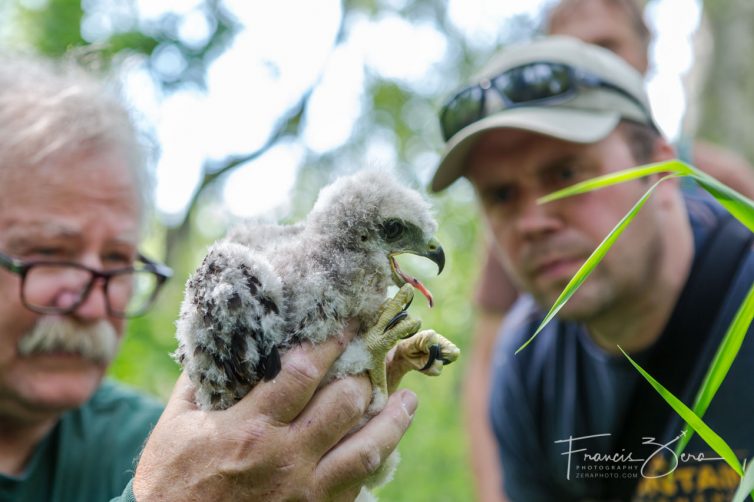
Raptor biologist Bud Anderson, left, holds a red-tailed hawk chick after it was retrieved from a nest 80 feet above the ground in woods adjacent to the airport.
Bird strikes are a problem for aviation, especially large birds. Damage can be expensive, and bird strikes have caused damage to aircraft that results in flight-control issues, a la US Airways Flight 1549.
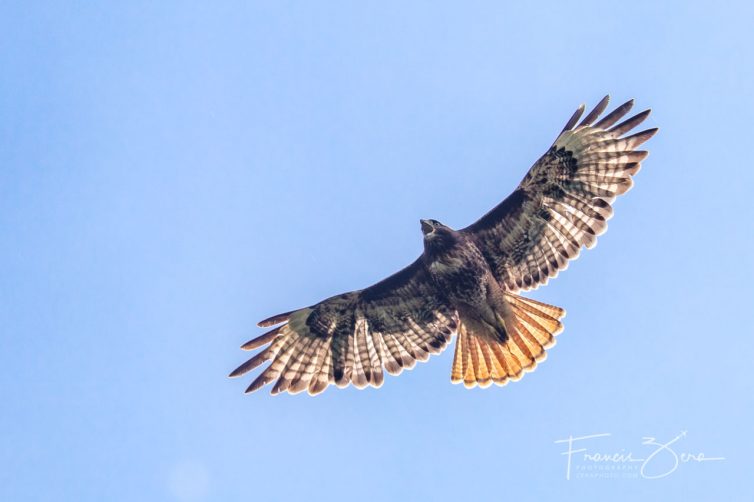
One of the parents of the raptor chicks being relocated reacts angrily to the intrusion.
According to an FAA report, “The annual cost of wildlife strikes to the USA civil aviation industry in 2015 was projected to be a minimum of 69,497 hours of aircraft downtime and $229 million in direct and other monetary losses. Actual losses are likely much higher.”
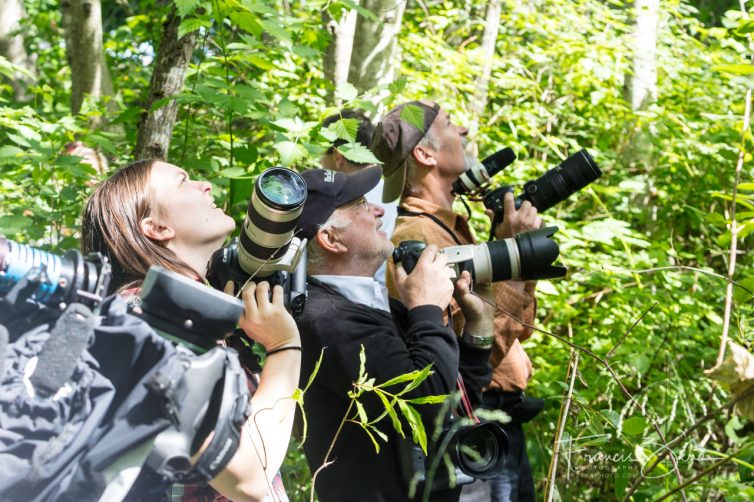
The assembled news media waits for the opportunity to photograph the adult birds as they circle their nest.
Seattle-Tacoma International Airport’s Raptor Strike Avoidance Program has been around since 2001, and results in the trapping/capture and relocation of nearly 100 raptors a year.
The most commonly captured raptors at Sea-Tac are red-tailed hawks, followed by Cooper’s hawks, American kestrels and barn, great horned and barred owls.
The majority of the trapped or captured birds are juveniles, which are unaware of the danger of aircraft as they learn to fly and then go in search for food. They are the airport’s highest priority for capture and relocation, as the majority of aircraft bird strikes involving raptors are with juvenile birds.
The adult birds, according to raptor biologist Bud Anderson, are far more wary of aircraft and tend to stay well clear.
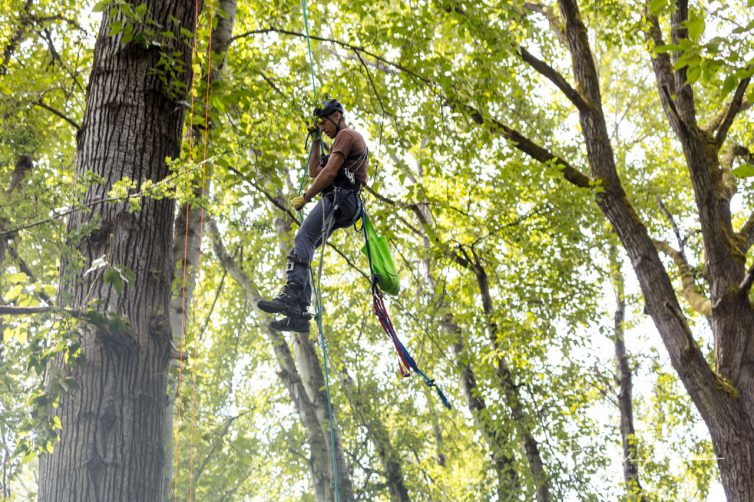
John Mailhiot, a professional arborist, has been working with Sea-Tac Airport for many years to capture raptor chicks. He is descending from the nest, which was 80 feet off the ground. The chicks are in the green bag.
Anderson said the adult hawks are territorial, and are thus allowed to stay near the airport because they drive other birds away. He said there are usually around 12 adult red-tailed hawks in the area immediately surrounding the airport.
The hawks tend to nest in the same trees year after year, making it a bit easier for the airport’s two wildlife biologists to keep track of the chicks and determine when they’re old enough to be safely captured and relocated.
Data provided by Sea-Tac Airport shows that in 2015 there were a total of five aircraft strikes involving red-tailed hawks. Three of those resulted in no damage to the aircraft. For the two other strikes, one required an engine replacement costing $1.5 million, and the other resulted in a $2.5 million engine replacement.
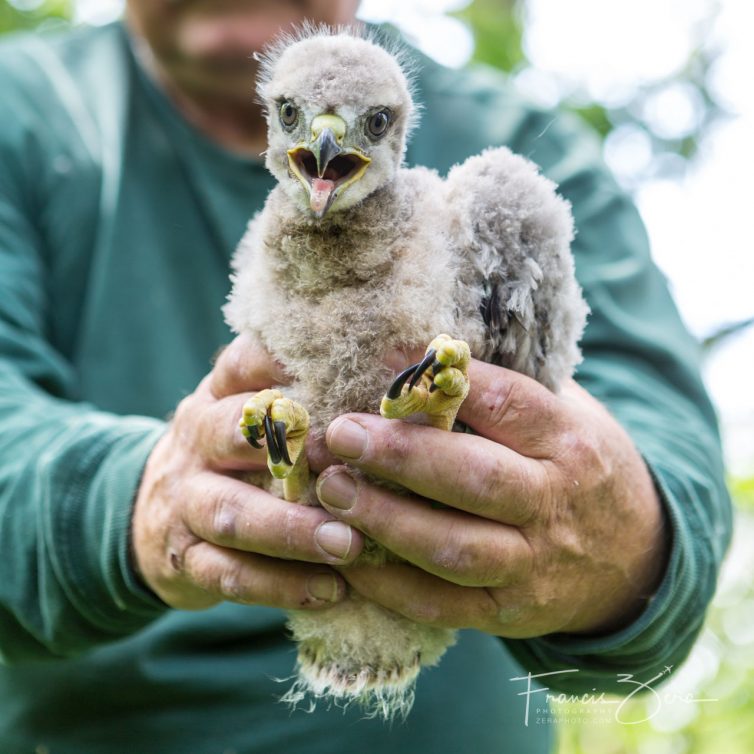
A red-tailed hawk chick, ready for relocation to safer area for both it and aircraft.
The captured chicks are moved to a raptor center in Skagit County, a couple hours’ drive north of Seattle, where they’re raised to adulthood, tagged, and released into the wild. Anderson said no tagged birds have been known to have traveled back to the airport since the program began.
What a revealing story! I’m totally impressed that SeaTac Airport employs two wildlife biologists in its Raptor Strike Avoidance Program. I wonder how many other airports are so advanced?
That’s got to be a pretty uncommon (& very cool) job title; “Airport Wildlife Biologist” – would make for better work stories than most!